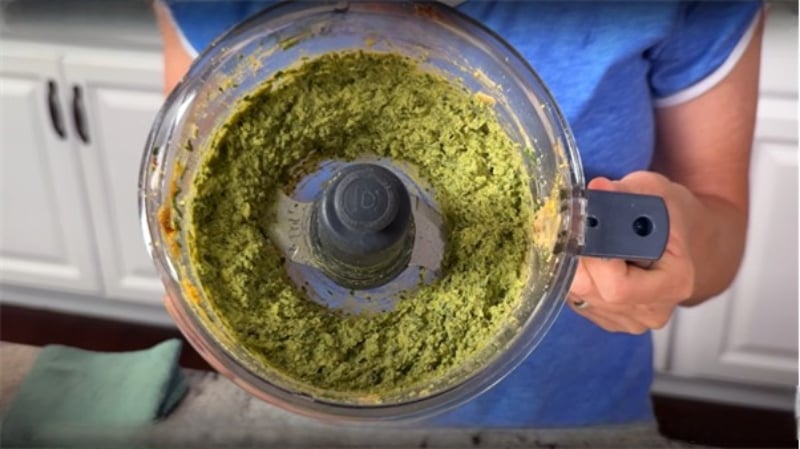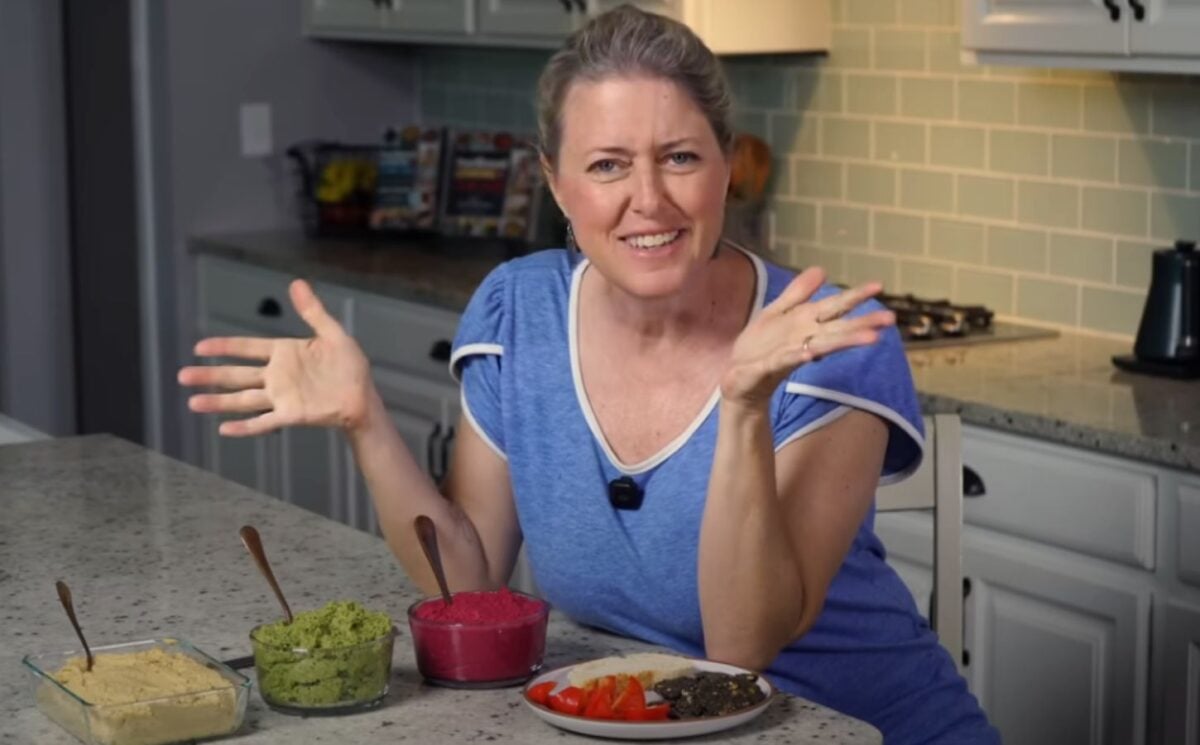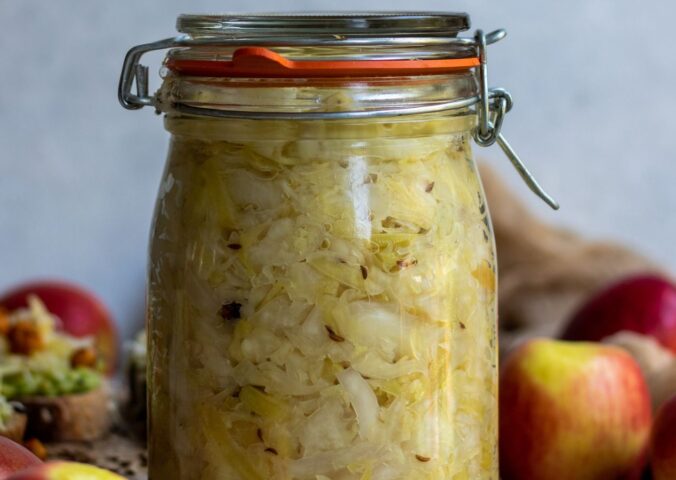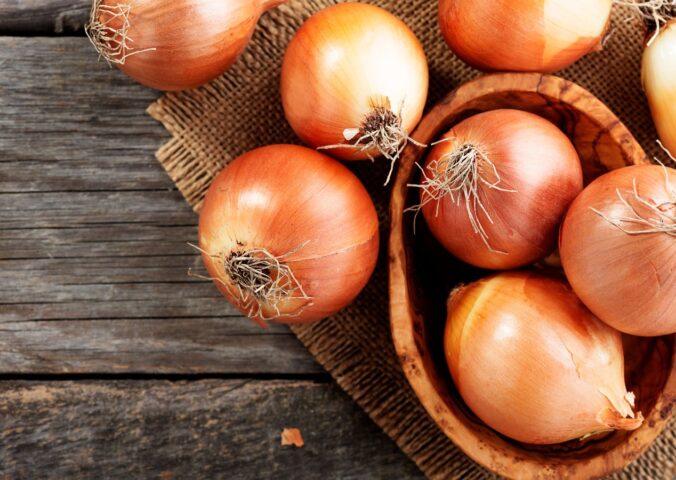If you love hummus but want to skip the oil, this video is worth a watch. Jill Dalton, host of The Whole Food Plant Based Cooking Show, recently shared three ways to make creamy, flavor-packed hummus without a drop of oil – all vegan and made with healthy, whole food ingredients.
Dalton is known for making plant-based cooking feel doable, even for beginners. In this video, she brings back two popular hummus recipes from earlier episodes and debuts a fresh one that celebrates summer herbs. She offers tips on how to blend them properly in a food processor or high-speed blender, which ingredients are flexible, and how to enjoy each one beyond the dip bowl – including on toast, with crackers, or even as a salad dressing.
Read more: How To Make This ‘Magical Mushroom’ Hummus
Original hummus
Dalton begins with a classic: her original hummus recipe, which she calls “an oldie but a goodie.” She uses canned chickpeas, reminding viewers to save the liquid from one can to help with blending. Everything goes straight into a food processor – or a high-speed blender if you have one – and is blended until smooth.
She includes a clove of garlic, tahini, lemon juice, miso, and nutritional yeast for a cheesy, umami flavor. The trick, she explains, is to scrape down the sides once or twice, since some ingredients get stuck and you don’t want to miss any. “There is our first hummus,” she says, holding it up. “Creamy, creamy goodness.” For serving, she keeps it simple: red bell pepper sticks are her go-to dipper.
Beet hummus
For the second variation, Dalton brings back a vibrant beet hummus that she previously paired with roasted cauliflower steaks and chimichurri sauce. “So delicious,” she says, referencing the original recipe. To make this one, she boils a red beet until soft and blends it with chickpeas and other familiar ingredients like lemon juice, tahini, miso, and nutritional yeast.
If you’re out of miso, Dalton says you can swap in low-sodium tamari instead – something she’s done herself when in a pinch. Once blended, the beet turns the hummus a deep pink, which she calls “just so vibrant.” She recommends pairing this version with seaweed-based Mary’s crackers. After tasting it on camera, she says, “I really love that one.”
Green goddess hummus

Dalton saves the most exciting for last: a new green goddess hummus inspired by the fresh herbs in her garden. “Because it is the start of summer and all of these herbs are up in the garden, you need to be eating more of that fresh, fresh green,” she says. She blends chickpeas with a mix of basil, parsley, cilantro, and chives, adding garlic for punch and pumpkin seeds for a whole food fat source.
To balance the flavor, she includes raisins for a touch of sweetness, lemon juice for brightness, and a splash of white wine vinegar – though she notes that apple cider vinegar works just as well. Like the others, she adds nutritional yeast, tahini, and miso. Once blended, the hummus turns a light green and smells “amazing.”
Dalton says this one’s especially versatile, she likes it on toast but adds, “Any three of these, you can also use them as salad dressings if you add a little water or even just a little more vinegar.” Of the three, this is her personal favorite: “So much flavor. It just explodes in your mouth.”
Whether you use them for dipping, spreading, or drizzling, these oil-free hummus recipes show just how versatile plant-based cooking can be. Dalton’s method keeps things simple, flavorful, and nutrient-dense – proof that you don’t need oil to create something rich and satisfying.
For more healthy plant-based recipes, check out the Whole Food Plant Based Cooking Show YouTube channel.






